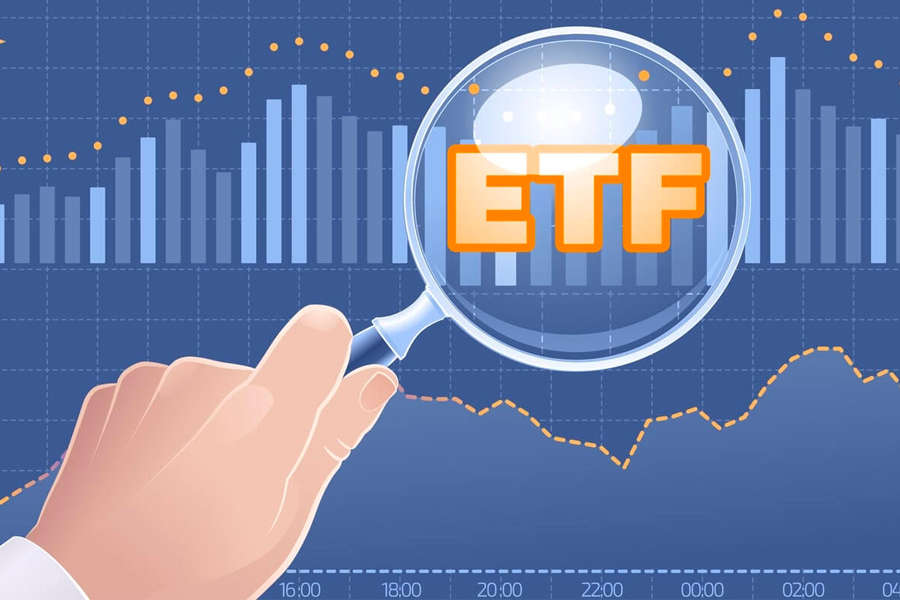
A comprehensive guide to trading ETFs on the stock market
Have you ever pondered the art of venturing into the stock market while diversifying your investments? Exchange-traded funds (ETFs) might be the answer you are looking for. ETFs are prevalent investment funds that trade on stock exchanges and offer a balanced mix of diversification, flexibility, and accessibility.
Investing in an ETF means buying a basket of different stocks, bonds, or other assets, which helps spread your investment risk. This diversification can benefit novice investors who want exposure to various sectors or markets without extensive research and monitoring.
ETFs can be bought, sold or traded throughout the trading day, providing flexibility and liquidity to investors. Whether you are a beginner or an experienced trader, understanding the basics and essentials of trading ETFs can be a valuable tool in navigating the stock market.To explore the concept of pooled investment vehicles and how they function within real estate investments, delve into the insights provided in this article by RealVantage.
Understanding ETFs
Before embarking on your trading journey, it’s crucial to understand what ETFs are and how they work. As mentioned earlier, ETFs are investment funds that track an underlying index or basket of securities, similar to mutual funds. They offer the benefits of diversification and financial management at a lower cost than mutual funds.
ETFs can be classified based on their underlying assets, like stocks, bonds, commodities, or currencies. This categorisation also helps determine the level of risk associated with each ETF. Stock-based ETFs, for example, are riskier than bond-based ETFs due to the stock market’s volatility.
Choosing the right ETFs
The first step in trading ETFs is selecting the right ones that align with your trading and investment goals and risk tolerance. It can be an overwhelming decision with thousands of ETFs available on the market. However, here are some factors you can consider to narrow down your options:
Expense ratio
The expense ratio is the annual fee ETF providers charge for managing the fund. A lower expense ratio means more returns for investors. It’s recommended to choose ETFs with an expense ratio below 0.5{3deaacbc49136e798089001def1ee907542c2eb9eba62609d1f29b2bd004c74c}.
Tracking error
ETFs are expected to mirror the performance of their underlying assets accurately. However, this may only sometimes be the case due to fees and rebalancing costs. A lower tracking error indicates a better-performing ETF.
Liquidity
Highly liquid ETFs are more accessible to buy and sell, ensuring you can exit or enter a position quickly without incurring significant costs. It is especially crucial during market volatility when prices can change rapidly.
Assessing ETF performance
Once you have chosen suitable ETFs, monitoring their performance regularly is essential. Here are some metrics you can use to evaluate the performance of your ETFs:
Net asset value (NAV)
The NAV refers to the total market value of all assets in an ETF divided by the number of outstanding shares. It’s a good indicator of the ETF’s overall worth and should be compared to its benchmark index. A higher NAV indicates a better-performing ETF.
Average daily volume
This prevalent trading metric measures the average number of shares traded in a day. A high volume indicates significant market interest and helps determine liquidity. Choosing ETFs with a daily average volume above 100,000 shares is recommended.
Managing your ETF investment
As with any investment, it’s vital to have a strategy in place for managing your ETF portfolio. Here are some tips that can help you make informed decisions:
Diversify your ETFs
While ETFs offer diversification, it is essential to consider investing in a well-balanced mix of different ETFs. Doing so can mitigate the risk of underperformance in one market segment, as other areas can offset any potential losses. This diversified approach can enhance overall portfolio stability and increase the chances of achieving trading and investment objectives.
Stay updated on market trends
ETFs, or exchange-traded funds, are investment vehicles that can be influenced by market volatility and are prone to significant fluctuations based on economic or current events. Staying well-informed about the latest news and market trends is crucial. It lets you make timely and informed decisions regarding your portfolio, ensuring optimal performance and potential returns. By closely monitoring the dynamic landscape of the financial markets, you can navigate various opportunities and challenges and effectively manage your investments for long-term growth and stability.
Use a regulated ETF broker
ETFs can be traded through a Singaporean brokerage account, making choosing a reliable and reputable broker like Saxo Bank essential. Some brokers offer commission-free ETF trading, which can help reduce expenses associated with buying or selling ETFs.
Rebalance regularly
Over time, as market conditions fluctuate, the weightings of different assets in an ETF may naturally shift, potentially causing it to deviate from its original allocation. Rebalancing, a proactive investment strategy, involves periodically adjusting the holdings to maintain the desired asset allocation.
By doing so, investors can effectively manage risk and ensure their portfolio remains aligned with their long-term investment objectives. This disciplined approach to portfolio management can help optimise performance and enhance the overall stability of the investment.
The last word
ETFs offer a convenient and cost-effective way of investing in various assets while managing risk. By understanding the basics of ETF trading, choosing appropriate ETFs, monitoring performance, and having a sound management strategy, investors can take advantage of these benefits and confidently navigate the stock market. Always do thorough research and consult a financial advisor before making investment or trading decisions to ensure they align with your goals and risk appetite.



